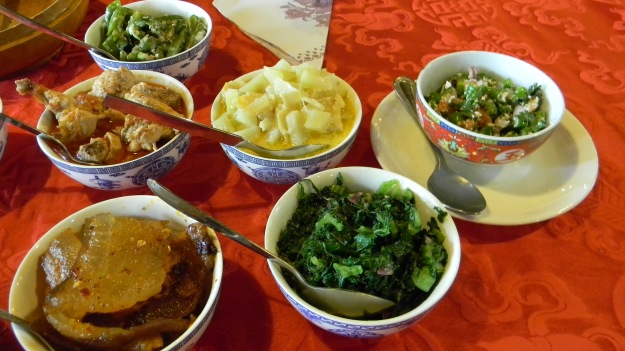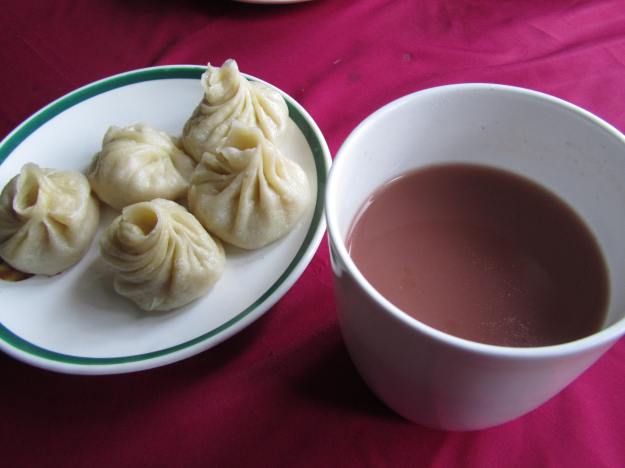I generally read up Lonely Planet quite thoroughly before visiting any new place, and make a note of places to visit for authentic fare. I prefer eating like the locals. I tried to stick to the medium-range restaurants suggested by Lonely Planet, and especially the ones listed as popular with the locals. While most of the information was quite accurate, 1-2 were really not up to the mark. More about that later, first a little bit about the Bhutanese food.
Bhutanese food is quite simple to make. It’s heavily influenced by cheese (datshi). Most dishes have cheese as one of the main ingredients. It could be either yak cheese, or the regular white cheddar. The abundance of milk in the country becomes evident as you leave Phuentsholing. There are several roadside stalls selling fresh milk, paneer (cottage cheese), butter, and ghee. Some also sell strings of dried yak cheese. This is extremely hard textured. You need to keep it in your mouth for it to soften. It has a very strong smell.
Chilies are used generously. In quite a few dishes they are the main vegetarian ingredient. think of it as a combination of chinese food and cheese. I quite liked it. Here’s some food you could try.
Ema Datshi
This national dish of Bhutan requires serious heat tolerance. It’s a chili curry with cheese. I could barely eat half a piece. But it has quite a tempting aroma.
Kewa Datshi
One of my favorites. It’s a curry made with onions, and potato slices in a white cheese gravy.
Any datshi is basically a cheese based curry. I also tried Nakey Datshi (fiddlehead fern in cheese, which I loved), and Shamu Datshi (mushroom and cheese.)
Chicken Paa
A delicious and healthy chichen dish made with lots of dried red chillies, very well marinated chicken, and lots of fresh spinach. The other variant is Phaksha Paa (pork paa).
Jasha Maroo
A simply chicken curry flavored entirely with ginger, garlic, and chili. No other spice. I loved it. Some of the restaurants had glass noodles added to the gravy.
Hogay
A salad made with cucumber, mint, chilies, and some crumbly, salty cheese. I found this similar to Greek salad, but with 500 times more heat. What do you expect when the quantity of cucumber and chlies is the same. 🙂 In fact, I think the chilies were more than the cucumber.
Ezay
Bhutanese pickle. I’m sure it’s made with many different ingredients. But the one I tried was cabbage, onion, lots of red chili flakes, and thingey. Thingey is a local spice. I can’t quite describe the taste. It’s not hot like chilies, but has a horse radish kind of heat, and temporarily numbs the tongue. It has a palate cleansing quality, somewhat like black peppercorns.
Khuley
Buckwheat savory pancakes, a specialty of the Bumthang region. I found them quite bland. They tasted somewhat like steamed bhakris.
Barthup (also written as Bakthuk, Barthu, Bathup in different places)
This is the Bhutanese version of the Tibetan Thukpa. Made with handmade, flat noodles, it’s quite a delight on a cold, wintry evening.
Sudja (also written as Suja)
Suja is more familiar to us with the name Butter Tea. It’s a salted tea mixed with butter. It actually doesn’t taste like tea at all. With it’s buttery taste, I found it more like a thin potato soup. I quite liked the taste. This probably the drink I had the most number of times in Bhutan. Although it can be made with regular tea leaves as well, it tastes the best when made with the suja-specific tea leaves. I picked up a few packets from the weekend market.





